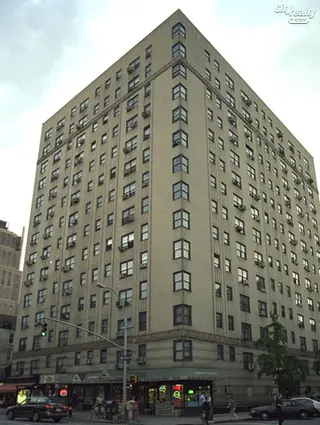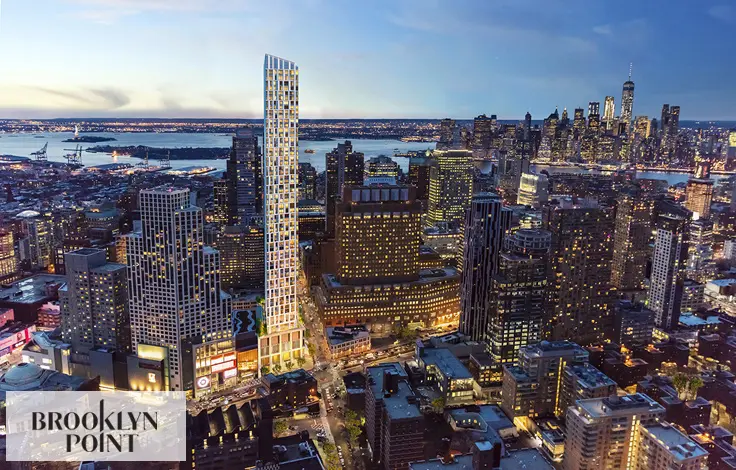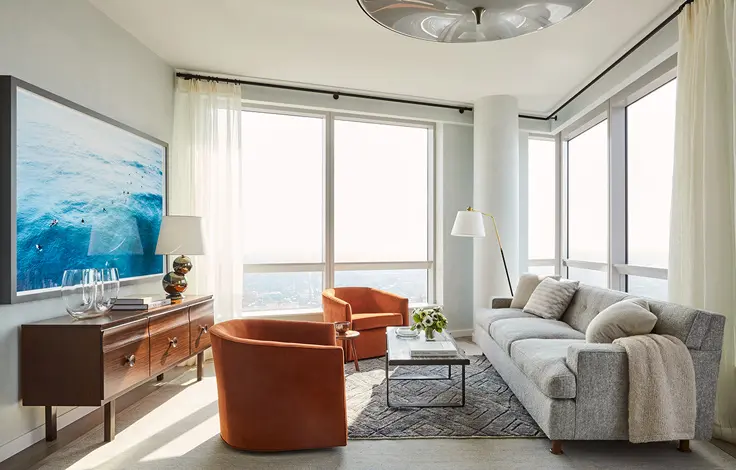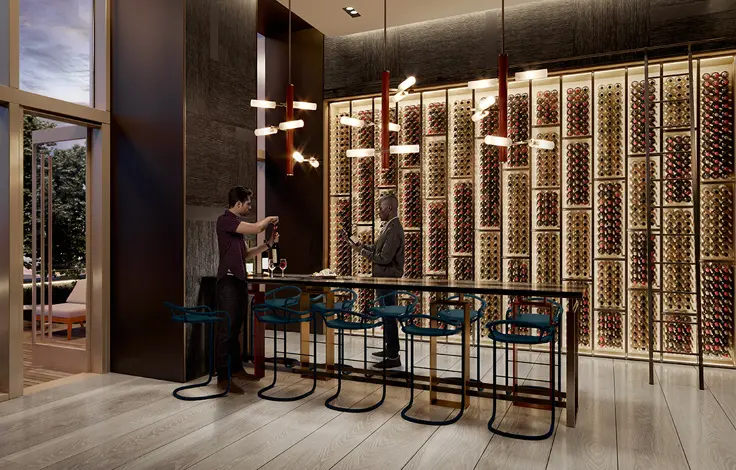 Carter Horsley
Carter HorsleyDec 23, 2011
Carter's Review
This boxy, but attractive, 15-story Art Deco building at 200 West 20th and Seventh Avenue has a prime location in the heart of the Chelsea District.
Built in 1938 and designed by Emery Roth, the building, known as Kensington House, was converted to a cooperative in 1987 and has 196 apartments. Amenities and staff include 24-hour doorman, live-in superintendent, laundry room, package room, and roof deck with Empire State Building views. Whole Foods, Trader Joe's, transportation, and Chelsea's best galleries, restaurants, and nightlife are a short walk away.
Bottom Line
Scalped of its cornice decoration and the top half of its rooftop watertank enclosure, this Art Deco building has many small apartments with sunken living rooms. It also has a glorious octagonal metal entrance marquee whose outline is mirrored on the sidewalk pavement.
Description
In addition to its very fine octagonal metal entrance marquee, this building has a very handsome gilded rustication on the first two stories of its base and very attractive broad bandcourses above its 2nd and 13th floors.
It is now missing its cornice decoration, a sad fact that has befallen too many buildings in the city, largely because of landlords wanting to reduce their maintenance costs and liability exposures and the failure of the city to come up with an incentive program to encourage the preservation of the architectural integrity of older and notable properties.
Cornices have been shorn off many fine buildings, even though they were often their most important architectural flourish aside from the entrance. Here, the cornice was not really a major projecting element as most are, but a decorative frieze that nonetheless served as an important transition signal. This building, which has some corner windows, is also missing the top half of its very handsome rooftop watertank enclosure.
The building, which permits protruding air-conditioners, has consistent fenestration and nice masonry piers. It is situated three blocks south of subway stations and cross-town buses, but is close to the many fashionable restaurants and boutiques of the nearby Flatiron District.
The building was the first in the city to take advantage of a change in the building code that permitted the use of welded, rather than riveted, steel frames. In his superb book on the architect, "Mansions in the Clouds: The Skyscraper Palazzi of Emery Roth," (Balsam Press, 1986), Steven Ruttenbaum noted that Roth and many others had associated "riveting with construction activity".
He notes, "It has been the melody of this industry. The silence of welding in this case has been strange, and we had a feeling that there is no activity at the job, even at the height of the work. Because of this new procedure, Roth’s pioneering building was erected in record time of five months.”
“In Roth’s opinion, the advantages of welding over riveting were important to consider. Welding the frame obviated the necessity to use clumsy projections and braces that were mandatory with riveting, and because of the absence of these brackets, it was anticipated that a more water-tight masonry skin could be hung from the frame. In addition, it was hoped that welding would reduce the time necessary to erect the frame, thus cutting costs for the builder. Roth’s belief that welding was superior to riveting was accurate.”
Amenities
According to Mr. Ruttenbaum, "Many unusual recreational features were [originally] offered to tenants, including a darkroom and print exhibition room for photography enthusiasts. And on the roof there were handball courts, ping-pong tables, a deck tennis court, a shuffleboard court and garden furniture."
Most of those amenities no longer exist, but the building’s roofdeck is quite large and there is a doorman, a live-in superintendent and a laundry. The building also welcomes pets of all sizes.
Apartments
The building, as Mr. Ruttenbaum noted, was designed for people of "modest means" and originally contained 195 small apartments. "To add a distinctive flair to these small, compact units, living rooms were sunken below the foyer level,” he added.
Apartment 508 is a one-bedroom unit with an 8-foot-long entry foyer that leads to a 10-foot-long open kitchen, and one-step-down, a 22-foot-long living room.
Apartment 1214 has an entry foyer that leads to a sleeping area and dressing room and an enclosed kitchen, and one-step-down, a 19-foot-wide living room.
Apartment 1405 has a 12-foot-long dining gallery, and a two-step-down, a 19-foot-long living room and a 5-foot-long dressing room.
Apartment 304 is a studio unit that has an entry foyer that leads to an 11-foot-wide dining gallery with an open kitchen, and one-step-down, a 20-foot-long living room.

- Co-op built in 1938
- 4 apartments currently for sale ($460K to $549K)
- Located in Chelsea
- 196 total apartments 196 total apartments
- 10 recent sales ($400K to $850K)
- Doorman
- Pets Allowed






 6sqft delivers the latest on real estate, architecture, and design, straight from New York City.
6sqft delivers the latest on real estate, architecture, and design, straight from New York City.
